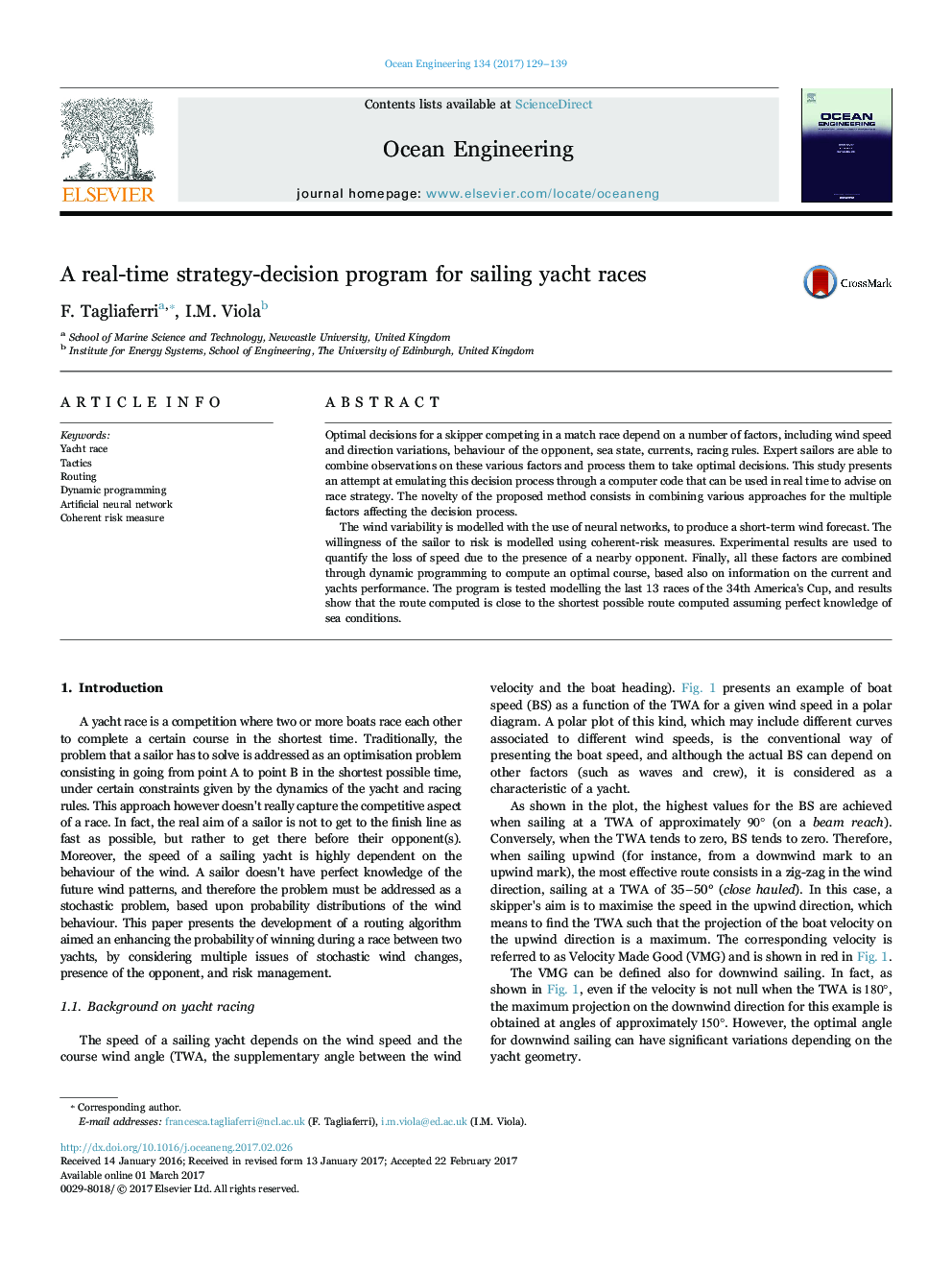| Article ID | Journal | Published Year | Pages | File Type |
|---|---|---|---|---|
| 5474598 | Ocean Engineering | 2017 | 11 Pages |
Abstract
The wind variability is modelled with the use of neural networks, to produce a short-term wind forecast. The willingness of the sailor to risk is modelled using coherent-risk measures. Experimental results are used to quantify the loss of speed due to the presence of a nearby opponent. Finally, all these factors are combined through dynamic programming to compute an optimal course, based also on information on the current and yachts performance. The program is tested modelling the last 13 races of the 34th America's Cup, and results show that the route computed is close to the shortest possible route computed assuming perfect knowledge of sea conditions.
Related Topics
Physical Sciences and Engineering
Engineering
Ocean Engineering
Authors
F. Tagliaferri, I.M. Viola,
